To me, food = love, because there are just a few ways Chinese parents say “I love you”:
“Have you eaten yet?”
“What did you eat for dinner?”
“Spend more money on food.”
“I made your favorite sweet and sour ribs.”
Memories of frustration at my parents for their high expectations mingle with the smell of my favorite Shanghai-style ribs. No matter what angry words I said in my teenage angst, my dad would always quietly cook a delicious dinner. The deep, rich aroma of soy sauce and vinegar would mix with the sweet, simple smell of jasmine rice, and the hurt would melt away. Each family has their own way of expressing love, and my family’s was definitely through food.
Now that I’m older, I try and cook my dad’s recipes to 1) feed myself and 2) bring all the warmth of home to my tiny San Francisco apartment. Of course, as any Chinese child knows when they ask mom or dad for the recipe, they get hit with the “Oh you know I don’t really measure anything, it’s just instinct”
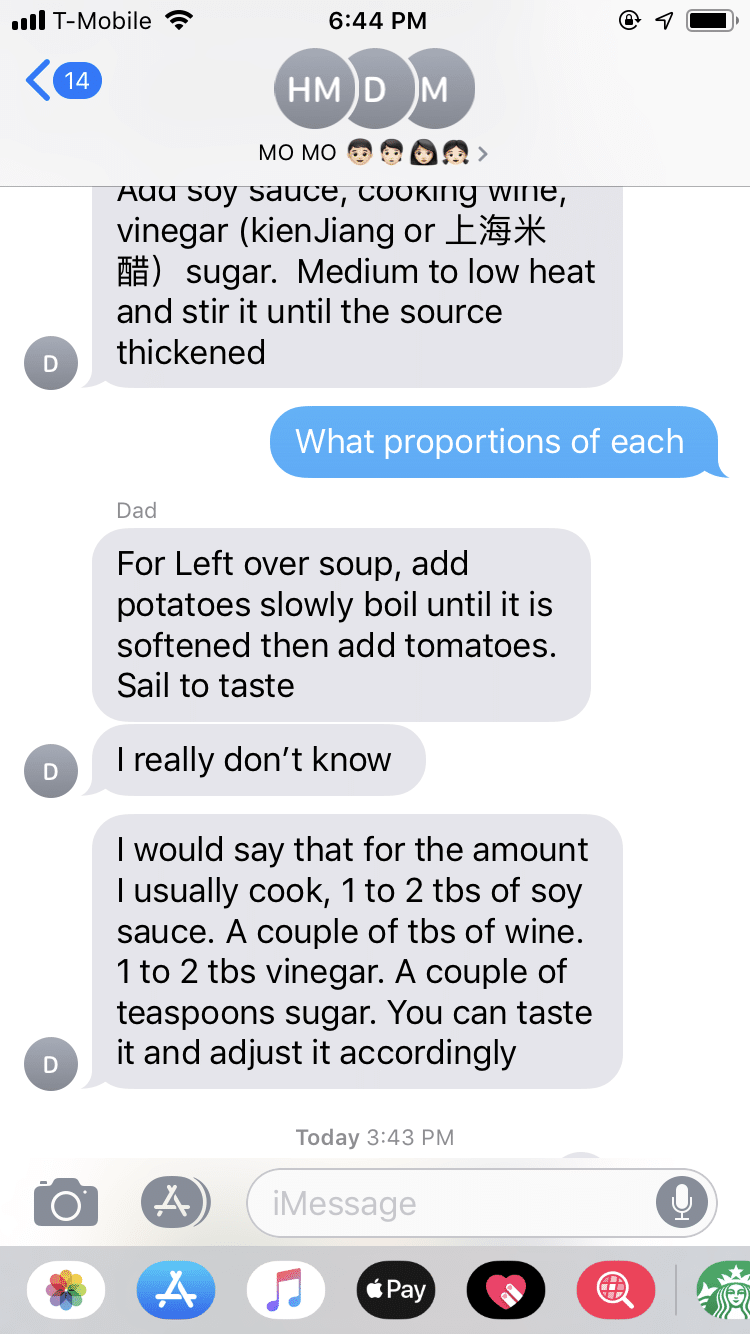
But I’m determined to get my dad’s recipes down in a way that can be replicated and passed along. He also serves the ribs with a heartening potato and tomato soup that uses the leftover pork broth. So in the name of science, I did an experiment and came up with the following results – please take with a grain of salt as the recipe and process still need refining:

- Go to your Ranch 99, local Asian market of choice, or Asian aisle at your neighborhood grocery store and pick up some ingredients. Tips for pork ribs – you want a good proportion of fat to lean, or else your ribs will come out tough. Fat helps the meat slide of the bone!

vinegar, soy sauce, cooking wine - Cut the spare ribs into 1-1.5 inch chunks, with one bone in each chunk. In a large pot, bring water to boil and simmer for 1 hour. Yes, you need that full hour for the ribs to become tender and delicious. Otherwise you’ll be flossing pork out of your teeth after dinner.
- After a few minutes, skim the pork blood and gunk off the top of the broth with a spoon. This helps keeps your broth clear.

yum, pork gunk - While the ribs boil, wash, peel, and cut the potato into 1-1.5 in chunks. Wash and cut the tomato into 1-1.5 chunks as well. Alternatively, if you don’t want to make soup, you can refridgerate the pork soup stock for up to a few days and use for cooking flavoring. After the ribs have been cooking for 30 minutes, place the potatoes in the soup at a low boil. They will need a while to become soft and tender.

- Once the ribs have cooked for an hour, place them in a wok or skillet with 2 ladles of pork broth. Begin cooking on low-medium heat.
- Add the soy sauce, vinegar, cooking wine, and sugar into the wok. At this point, put the tomatoes in the soup.

Do I have enough soy sauce? Enough sugar? It’s an experiment! - Continue cooking on low-medium heat until the sauce begins to thicken and the ribs darken in color.

- Serve with jasmine rice and enjoy!
Some takeaways as I made this recipe:
+ A little dark soy sauce goes a long way – I added about 3.5 tbs and it was way too salty. 2 tbs should be sufficient.
+ The quality of pork is important – try and get it fresh from the butcher, and always try and get a nice proportion of fat.
+ Next time I’ll boil the pork with ginger – It should deepen and enhance the flavor of both the broth and the ribs.
Overall though it was mostly a success and definitely a lot of fun. I’ll try and make it again with a more refined recipe and see how it goes! Have you ever tried to replicate some of your favorite family recipes?

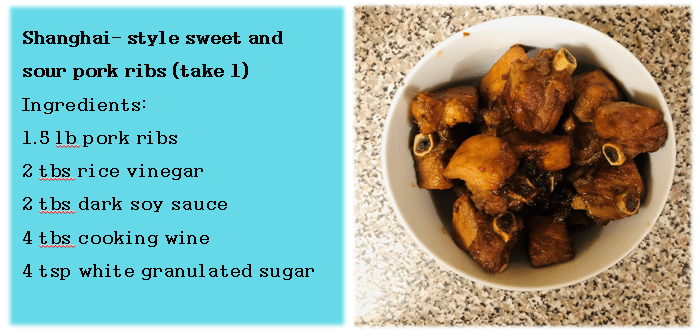
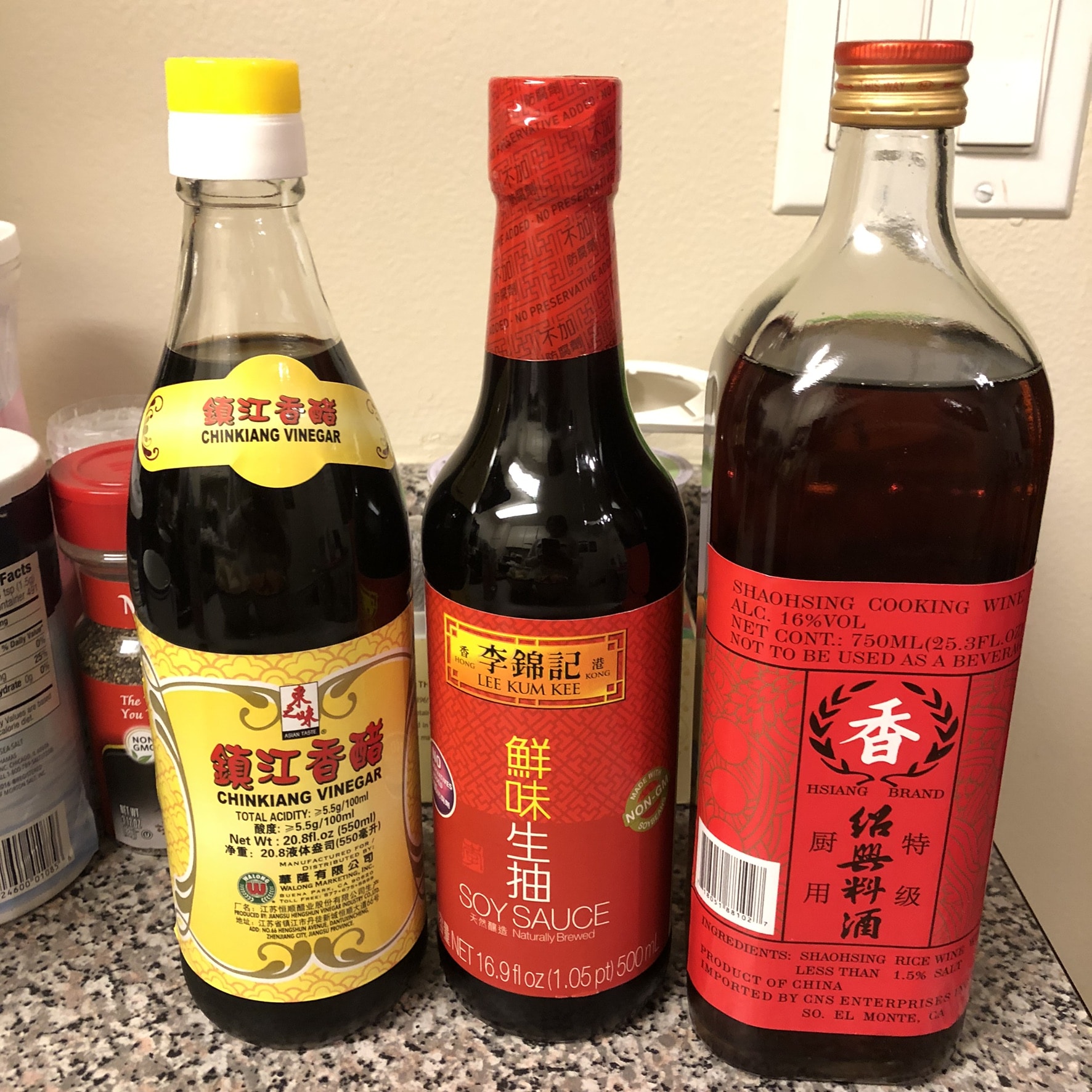
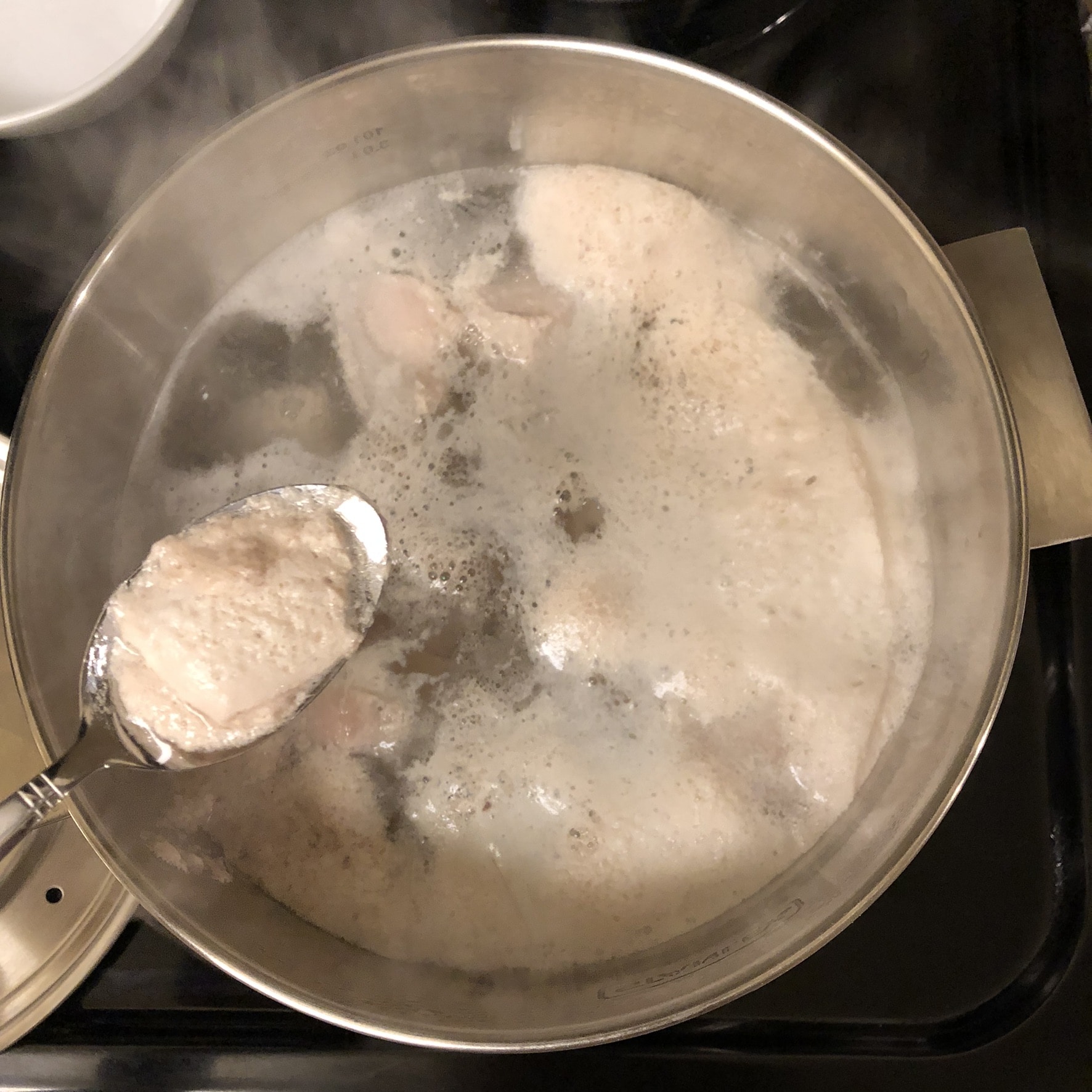
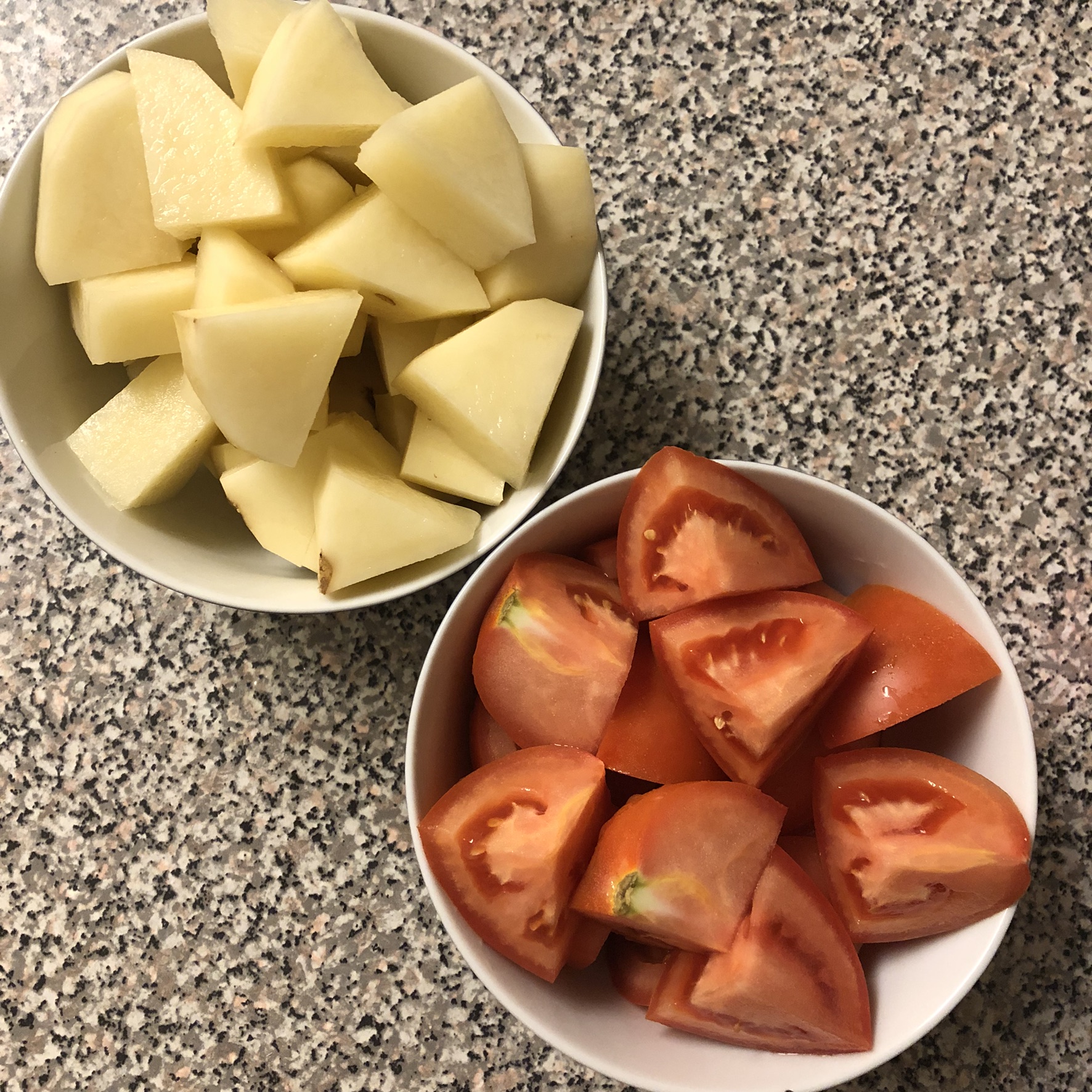
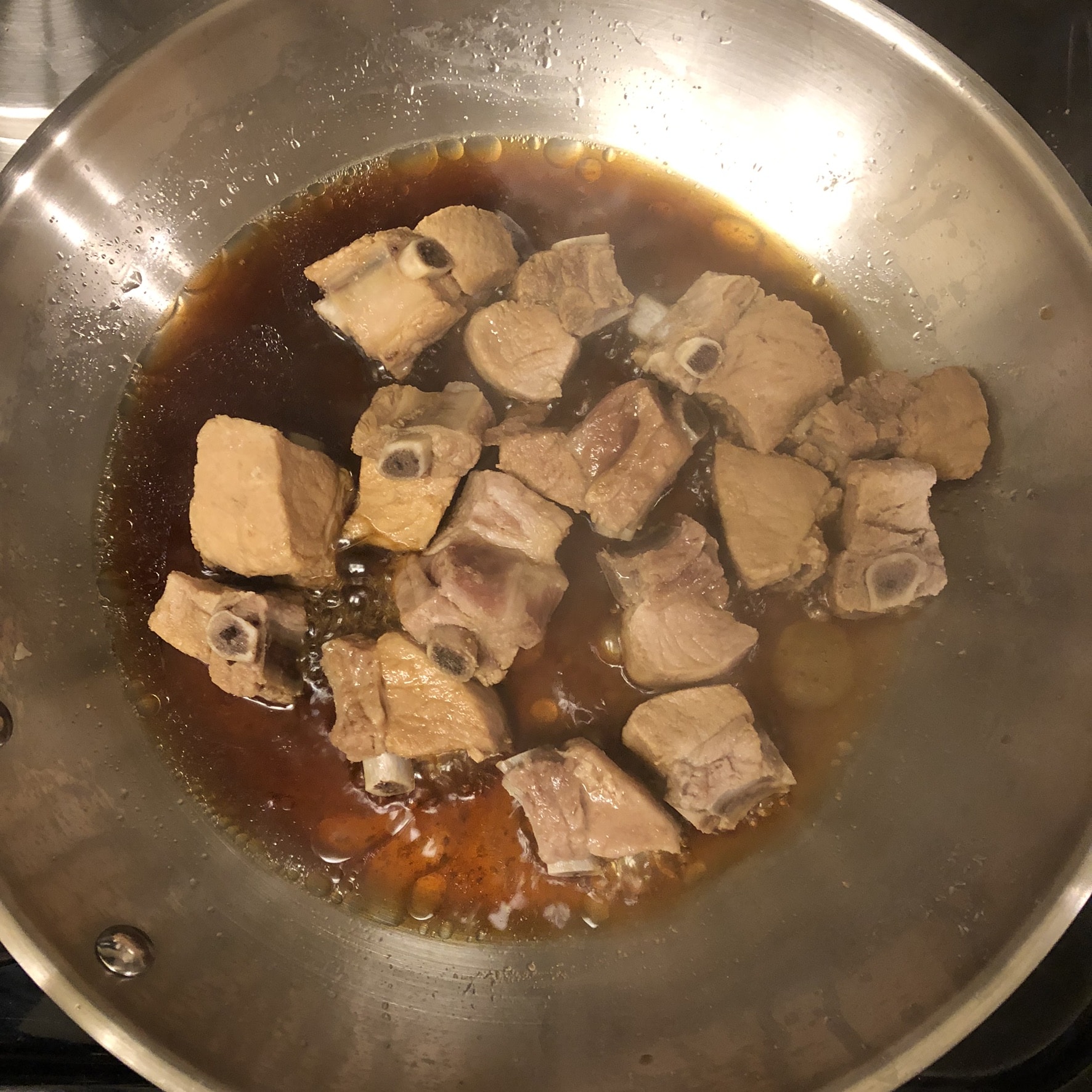
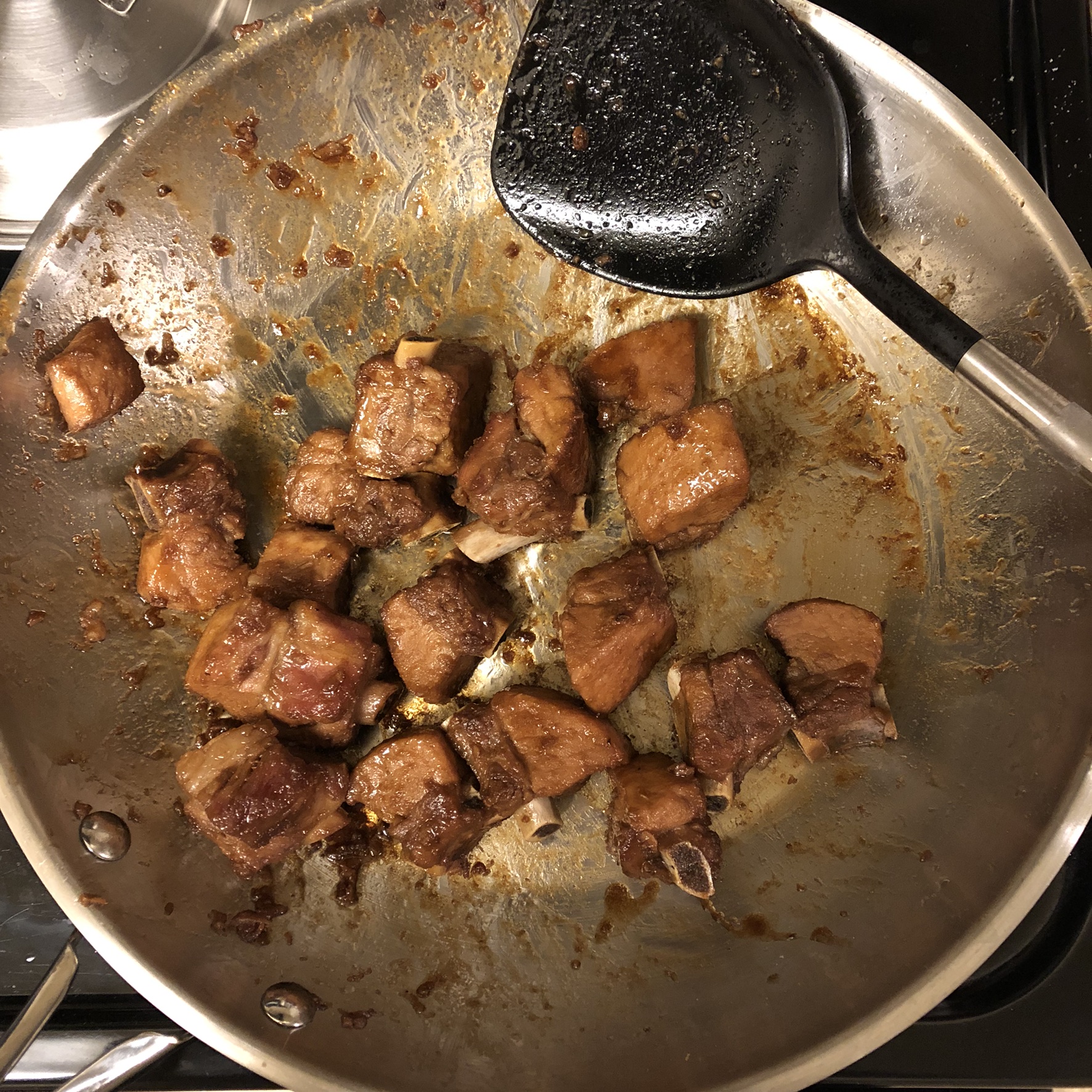


Pingback: Colorful Tofu and Vegetable Stir Fry – Halicopter Away
Pingback: Spam Fried Rice – Halicopter Away